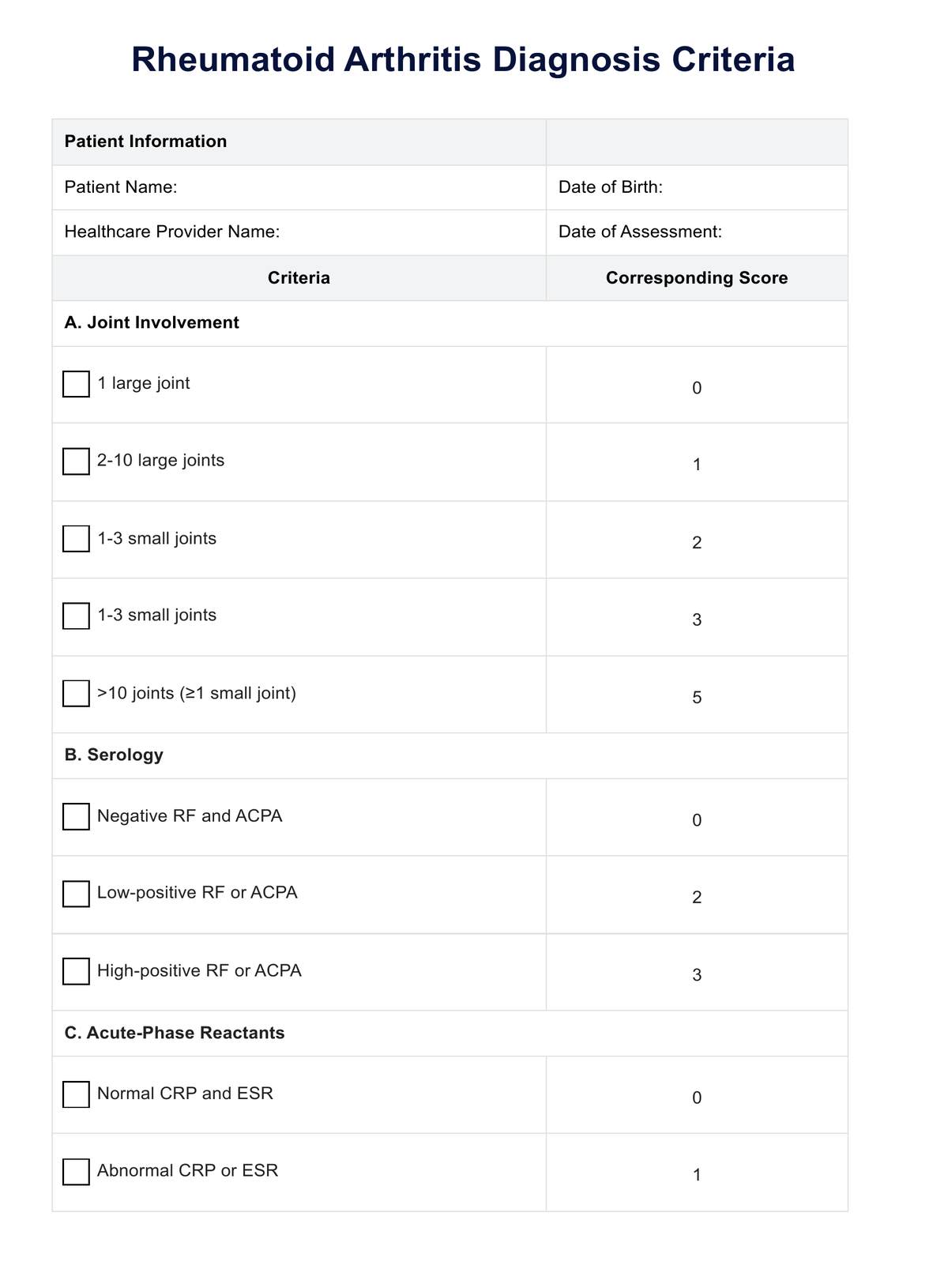Currently, there is no cure for RA, but early diagnosis and aggressive treatment can help manage symptoms, slow disease progression, and improve quality of life.

Rheumatoid Arthritis Diagnosis Criteria
Learn about the essential Rheumatoid Arthritis Diagnosis Criteria for accurate identification and timely treatment in healthcare.
Use Template
Rheumatoid Arthritis Diagnosis Criteria Template
Commonly asked questions
Yes, RA is a systemic disease that can affect organs and systems beyond the joints, leading to complications such as rheumatoid nodules, cardiovascular disease, lung involvement, and osteoporosis.
Lifestyle changes like maintaining a healthy diet, regular exercise, stress management, and smoking cessation can help manage RA symptoms and improve overall well-being.
EHR and practice management software
Get started for free
*No credit card required
Free
$0/usd
Unlimited clients
Telehealth
1GB of storage
Client portal text
Automated billing and online payments











